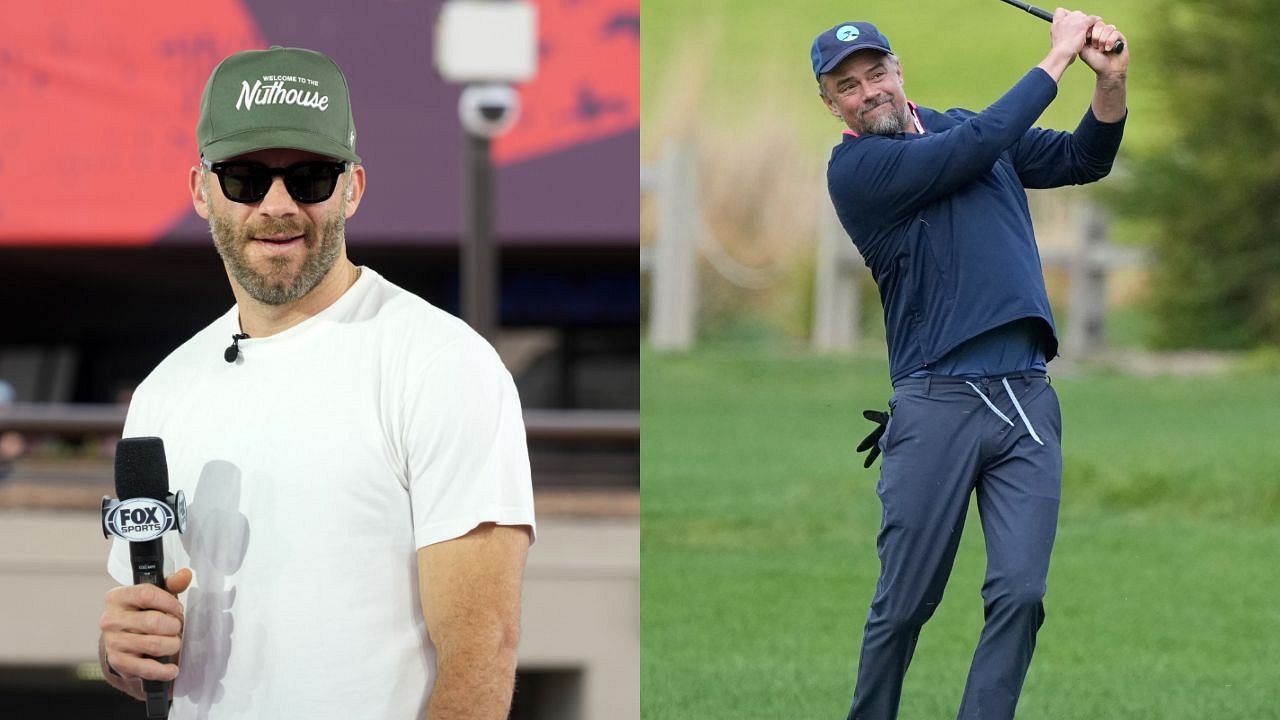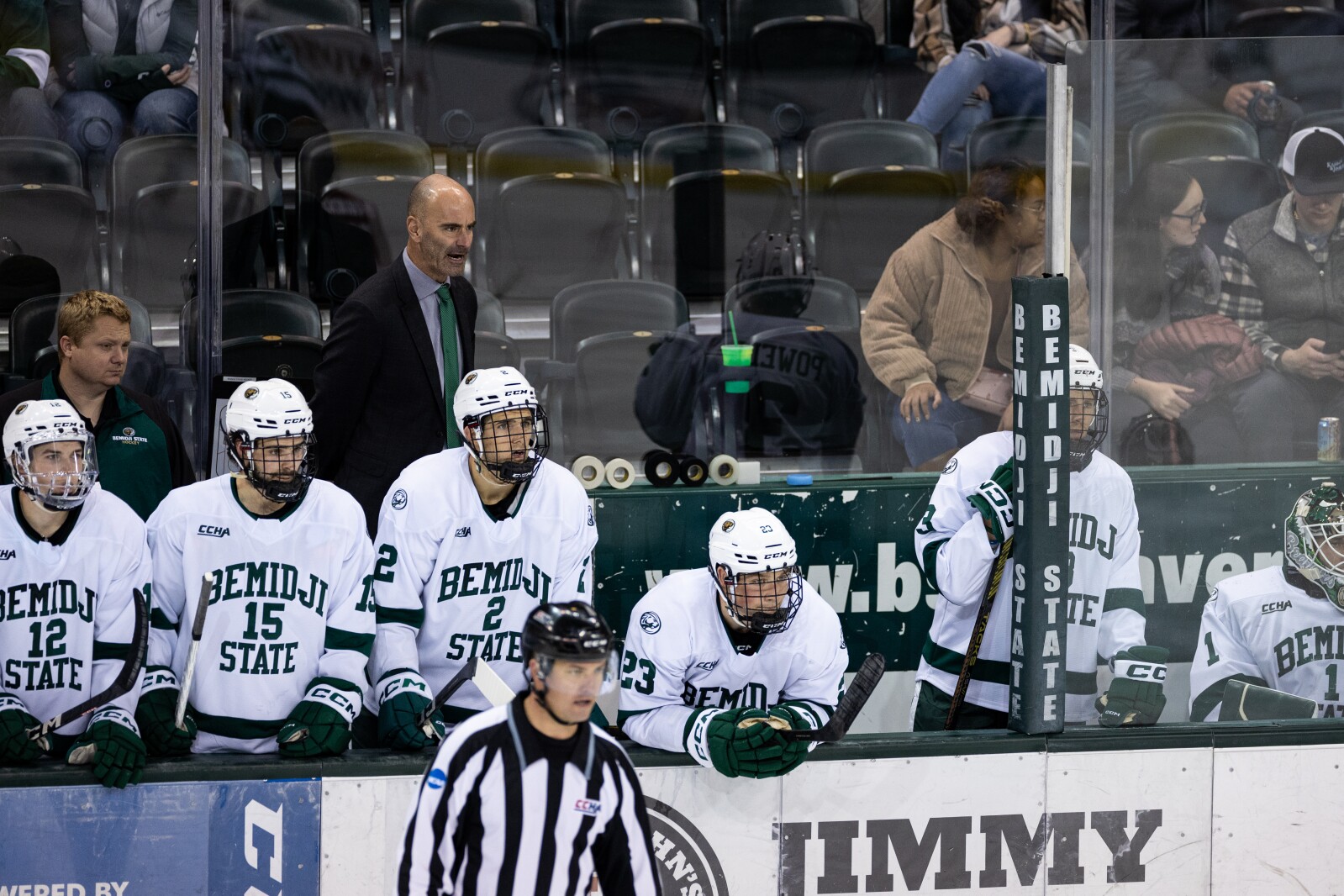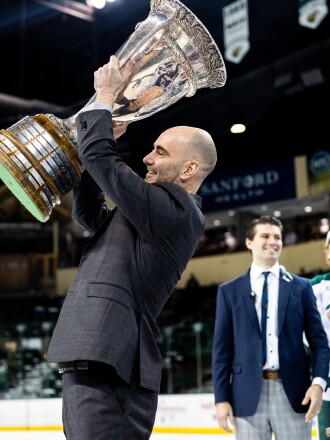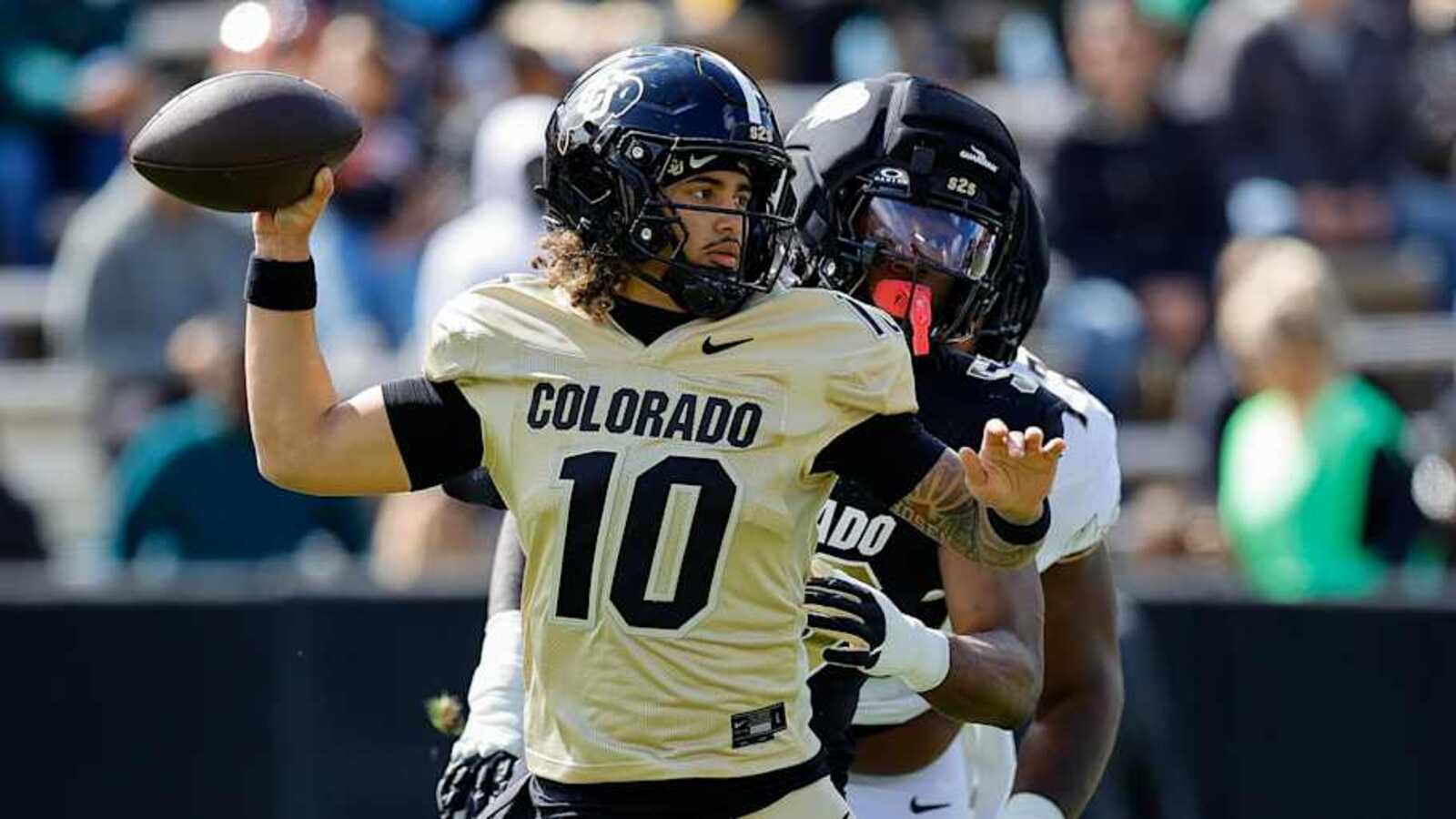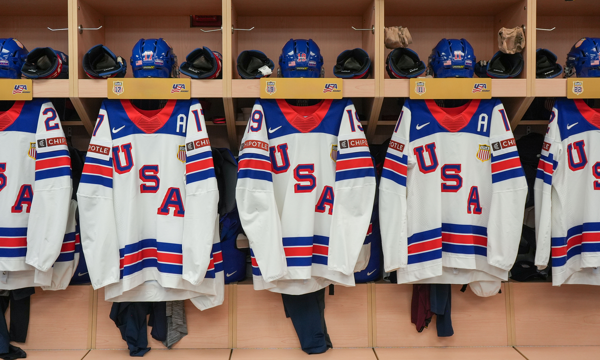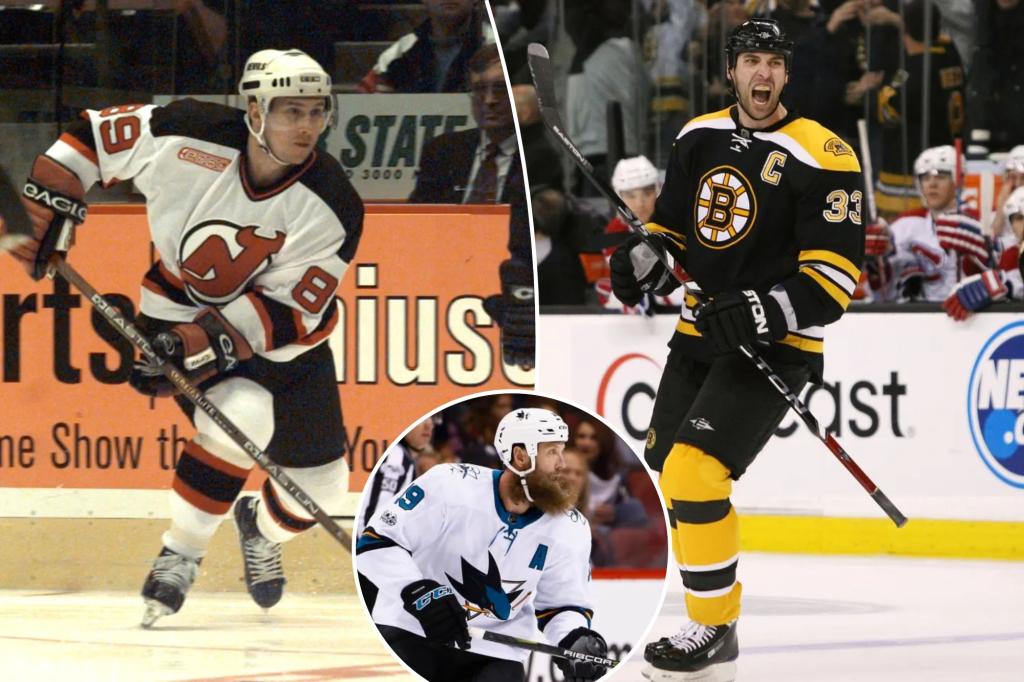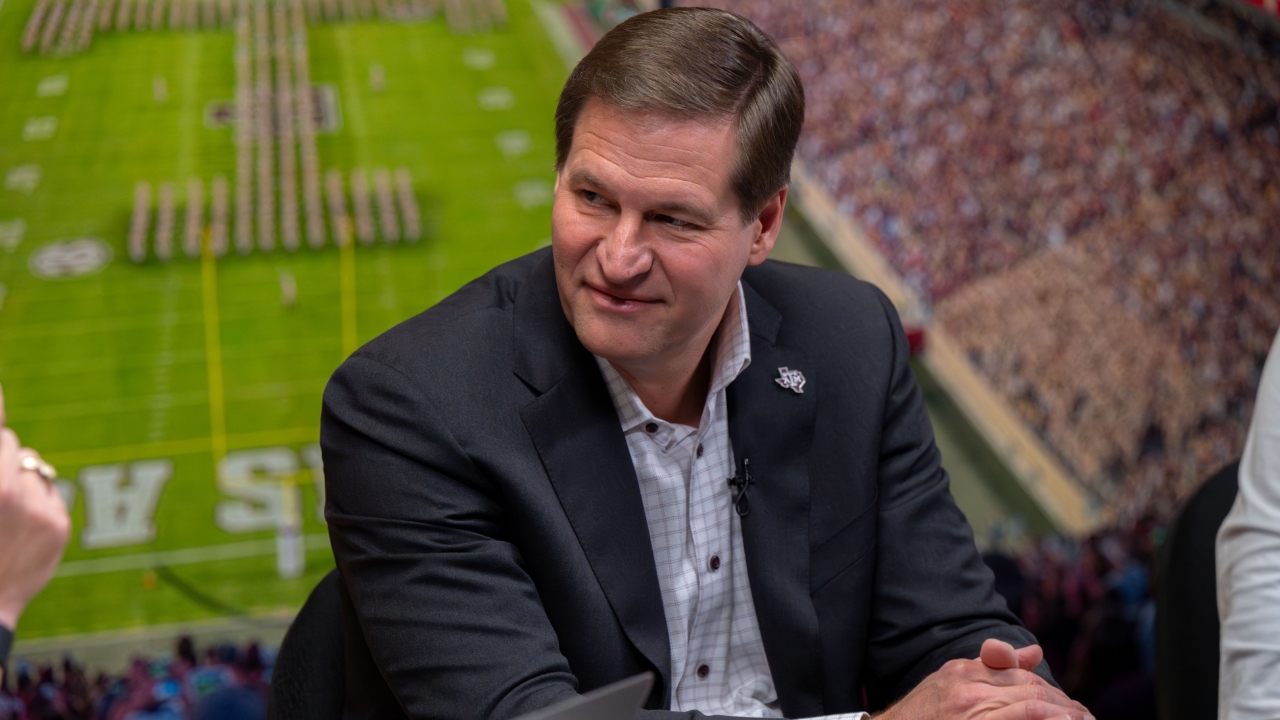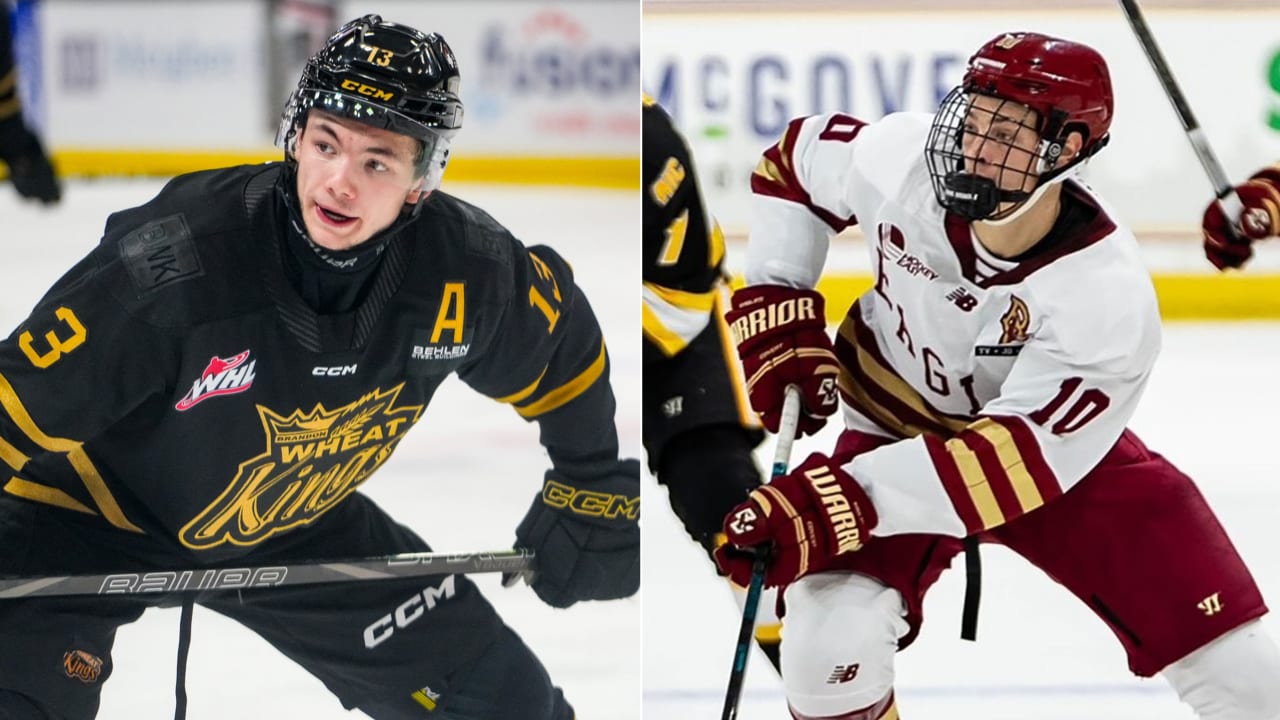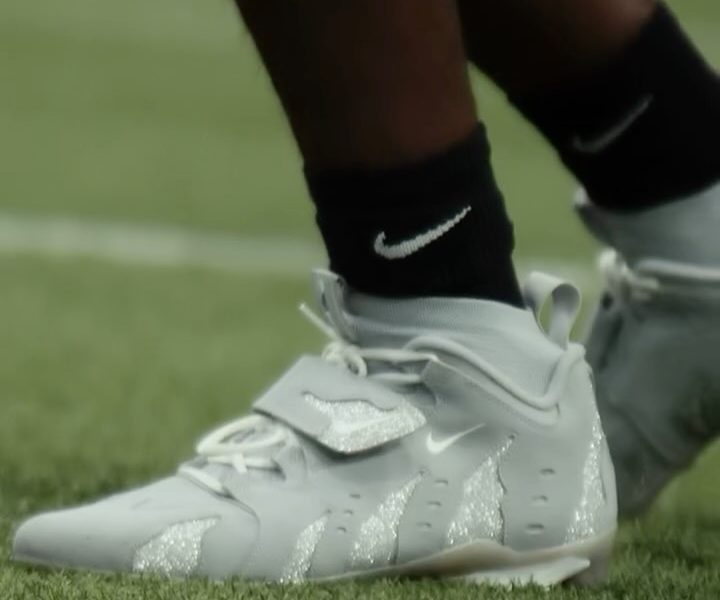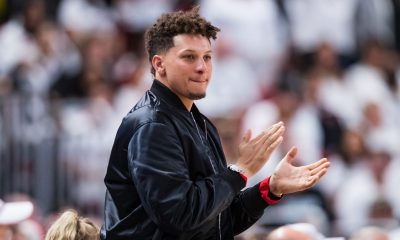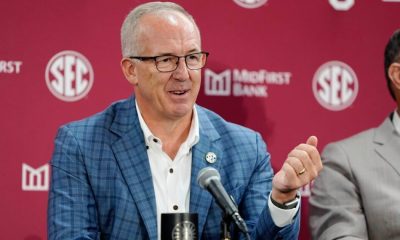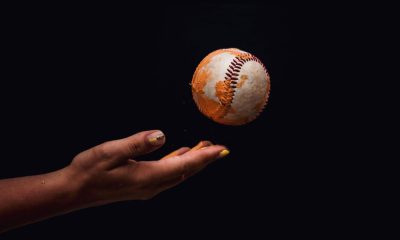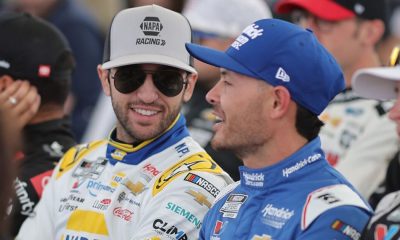19. St. Louis Blues
Kimelman — Cole Reschny: Reschny’s speed and tenacity make him an appealing prospect. College hockey will be good for him because of the opportunity it will provide him to add strength and develop his skills against older competition. Three years from now, the possibility of the Blues rolling out Robert Thomas, Otto Stenberg (2023, No. 25) and Reschny as their top three centers should have them competing for more than just a playoff spot.
Morreale — Lynden Lakovic: Lakovic missed 21 games because of injury this season but still led Moose Jaw in scoring. He’s a high-end wing capable of setting up teammates and finishing around the goal. He was Moose Jaw’s captain this season and some scouts have compared him to Sabres forward Tage Thompson.
20. Columbus Blue Jackets (from Minnesota Wild)
Kimelman — Logan Hensler, D, Wisconsin (NCAA): After taking a forward with their first pick, the Blue Jackets can add Hensler (6-2, 198) a right-handed shot who skates well and showed no problem handling older, more physically developed forwards in the defensive zone as a college freshman. The 18-year-old had 12 points (two goals, 10 assists) in 32 games this season, and averaged 12:12 of ice time in seven games to help the U.S. win gold at the WJC.
Morreale — Justin Carbonneau: After selecting a physical defenseman six picks earlier, the Blue Jackets snag Carbonneau, who has been compared to Flyers forward Owen Tippett. Carbonneau is a prototypical power forward with plenty of grit and smarts. His skating continues to improve, as does his 200-foot game. The right-handed shot led Blainville-Boisbriand with 89 points and was second with 37 power-play points (16 goals, 21 assists) in 62 games.
21. Ottawa Senators
Kimelman — Benjamin Kindel, C, Calgary (WHL): The Senators need a young center prospect and Kindel (5-10, 180) would be a strong option. The 18-year-old was seventh in the WHL with 99 points (35 goals, 64 assists) in 65 games and showcased great skating and quickness with strong playmaking ability.
Morreale — Blake Fiddler, D, Edmonton (WHL): Fiddler (6-4, 220) ranked first among Edmonton defensemen in goals (10), points (33) and shots on goal (131) in 64 regular-season games. He had three points (two goals, one assist) with a plus-8 rating and averaged 20:46 of ice time in seven games for the United States at the 2025 U-18 Worlds. The son of former NHL forward Vernon Fiddler, Blake is a playmaker from the blue line who can get shots through but also jump down and create scoring chances.
22. Philadelphia Flyers (from Colorado Avalanche)
Kimelman — Cameron Reid: After selecting a center with their first pick, the Flyers address their second-biggest need with Reid, an explosive skater who won’t shy away from physical play. Reid projects to be a top-four defender who can quarterback a power play effectively.
Morreale — Daniil Prokhorov, RW, Dynamo St. Petersburg Jr. (RUS-JR): With three picks in the first round, the Flyers can afford some swings, and this choice fits the bill. He offers size (6-5, 219), skill and physicality, and is strong at the net front. Compared by some scouts to Colorado Avalanche forward Valeri Nichushkin, the left-shot right wing had 27 points (20 goals, seven assists) in 43 games this season with St. Petersburg in the MHL, Russia’s junior league. He was seventh among MHL skaters with 187 shots on goal.
23. Nashville Predators (from Tampa Bay Lightning)
Kimelman — Cullen Potter, C, Arizona State (NCAA): The Predators find a future top-six center in Potter (5-10, 172), one of the fastest skaters in this year’s draft class. The 18-year-old had 22 points (13 goals, nine assists) in 35 games as a college freshman, and had eight points (four goals, four assists) in seven games to help the U.S. win the bronze medal at the World U-18s.
Morreale — Logan Hensler: The sixth-youngest player in NCAA hockey, Hensler played well at both ends of the ice, including 30 blocked shots in 32 games as a college freshman after he had 32 points (four goals, 28 assists) in 61 games with USA Hockey’s National Team Development Program Under-18 team in 2023-24. Hensler can lead the rush, can close out quickly while defending and can identify shooting and passing lanes.
24. Los Angeles Kings
Kimelman — Milton Gastrin, C, MoDo Jr. (SWE-JR): With Anze Kopitar (37) and Phillip Danault (32) each older than 30, finding young centers could be a priority this year for the Kings. Gastrin (6-1, 194) had 42 points (18 goals, 24 assists) in 40 games in Sweden’s junior league, and the 18-year-old also made his SHL debut with MoDo, going without a point in eight games. He really stood out among his age group for his leadership ability, serving as captain for Sweden at the Hlinka Gretzky Cup and the World U-18s. At the latter tournament, he had 10 points (three goals, seven assists) in seven games to help Sweden win the silver medal. His vision and high-end hockey IQ make him a dependable player in all three zones.
Morreale — Benjamin Kindel: The right-shot center can play any situation, is smart and responsible with and without the puck and is an asset on the power play and penalty kill. He was named a WHL Eastern Conference First Team All-Star, and his 23-game point streak (45 points; 15 goals, 30 assists) from Nov. 8-Jan. 12 was the second-longest in the league during the regular season, behind forward Gavin McKenna (40 games) of Medicine Hat, the projected No. 1 pick of the 2026 NHL Draft.
25. Chicago Blackhawks (from Toronto Maple Leafs)
Kimelman — Malcolm Spence, LW, Erie (OHL): After selecting a center with their first choice, the Blackhawks can take a shot with a talented forward who projects to be a solid goal-scorer. Spence (6-1, 190) is a very good skater who can accelerate with the puck on his stick, and he’s strong enough to make his presence felt on the forecheck. He also was one of five OHL players to score at least five power-play goals and five short-handed goals this season. The 18-year-old will play at the University of Michigan next season.
Morreale — Cullen Potter: Potter was the first forward to go from the NTDP Under-17 team to college, skipping his chance to play on the program’s Under-18 team. An elite skater capable of creating chances in the offensive end, he has outstanding hockey bloodlines; his mother, Jenny Potter, played for the United States at the Olympics four times and was inducted into the U.S. Hockey Hall of Fame in 2020.
26. Nashville Predators (from Vegas Golden Knights via San Jose Sharks)
Kimelman — Joshua Ravensbergen, G, Prince George (WHL): Predators general manager Barry Trotz said the timeline is right for Nashville to add a top goalie prospect either this year or next at the draft, so this seems like a good opportunity to select the best available at the position, coincidentally with a pick acquired from the Sharks when they traded their former top goalie prospect, Yaroslav Askarov. Ravensbergen (6-5, 191) has the prototypical NHL size, and his athleticism and demeanor also are standout qualities. The 18-year-old was 33-13-4 with a 3.00 goals-against average and .901 save percentage in 51 games.
Morreale — Malcolm Spence: Spence was third in scoring for Erie this season, his third in the OHL. He also tied for fourth in the league with seven game-winning goals. He has plenty of speed and is a high-end playmaker. Spence had seven points (three goals, four assists) in seven games to help Canada win the 2024 IIHF World Under-18 Championship.
27. Washington Capitals
Kimelman — Sascha Boumedienne, D, Boston University (NCAA): The Capitals can continue to add to their prospect depth on defense with Boumedienne (6-1, 184), who displayed a mature game as a college freshman and had 13 points (three goals, 10 assists) in 40 games. The 18-year-old really turned heads at the 2025 World U-18s, setting a record for defensemen with 14 points (one goal, 13 assists) in seven games for Sweden, and he was named the tournament’s best defenseman.
Morreale — Milton Gastrin: Gastrin is considered a playmaker with good speed, compete and intelligence. He can play center or left wing, and is a strong skater who plays a simple and effective game with high hockey IQ. Gastrin also was captain for Sweden when it won the bronze medal at the 2024 Hlinka Gretzky Cup and for the 2022 World Under-17 Hockey Challenge.
28. Winnipeg Jets
Kimelman — Blake Fiddler: The Jets lack a young defenseman with the kind of size and strength Fiddler brings. Add in that he’s a right-handed shot with strong NHL bloodlines, and he fills a need as well as arguably being the best player available at this spot.
Morreale — Bill Zonnon, RW, Rouyn-Noranda (QMJHL): The left-handed shot (6-2, 185) can play wing or center and has improved each of his three seasons in the QMJHL. He was second on the team with 83 points (28 goals, 55 assists) and 34 power-play points (seven goals, 27 assists) in 64 games this season. He fits the Jets profile as a player with strong compete and good defensive habits.
29. Carolina Hurricanes
Kimelman — Bill Zonnon: The Hurricanes need to add center depth to their prospect group, and Zonnon excelled after being moved to center this season. The 18-year-old has the quickness and tenacity the Hurricanes like in their forwards. He should develop into a key contributor on the power play and penalty kill. He’s expected to play with Blainville-Boisbriand next season after being traded there June 5.
Morreale — William Horcoff, C, Michigan (NCAA): The youngest player in college hockey this season had 10 points (four goals, six assists) in 18 NCAA games after joining Michigan in December. Horcoff, the son of former NHL forward Shawn Horcoff, had 14 points (eight goals, six assists) in 28 games with the NTDP U-18 team to begin the season. He makes plays in tight spaces and is really effective when he uses his size (6-5, 203) to shield pucks and thrive in high-traffic areas.
30. San Jose Sharks (from Dallas Stars)
Kimelman — Henry Brzustewicz, D, London (OHL): After selecting London defenseman Sam Dickinson with the No. 11 pick of the 2024 NHL Draft, the Sharks can choose his partner from the Memorial Cup championship team here. Brzustewicz (6-1, 203) had 42 points (10 goals, 32 assists) in 67 games this season. The 18-year-old right-handed shot skates well and can jump into the play, and also is strong enough to push forwards away from the front of his net. He should get more ice time and offensive opportunities next season with London.
Morreale — Sascha Boumedienne: The youngest defenseman in NCAA hockey this season had a strong second half to the season, including seven points (three goals, four assists) in his final 12 games, which set him up for an outstanding World U-18 tournament. He’s poised, defends well and has the ability to skate and transition the puck well. He is expected to play a bigger role for Boston University next season.
31. Philadelphia Flyers (from Edmonton Oilers)
Kimelman — Jack Ivankovic, G, Brampton (OHL): The Flyers use the benefit of having three first-round picks to select a player one scout called, “probably the most skilled goalie in this draft.” Ivankovic (5-11, 173) doesn’t have the typical NHL size for the position, but he’s won everywhere he’s gone, including a gold medal for Canada at the 2025 IIHF World Under-18s Championship when he was 6-0-0 with a 1.05 GAA, .961 save percentage and two shutouts in six games and was voted the tournament’s best goalie. He also was the first 17-year-old goalie (he turned 18 on May 22) to start for Canada at the World Junior Championship since 1987. Ivankovic will play at the University of Michigan next season.
Morreale — Henry Brzustewicz: A two-way right-handed shot, Brzustewicz brings great competitiveness, vision and physicality from the back end. Capable of being utilized in all situations, Brzustewicz was third in scoring among NHL draft-eligible defensemen in the OHL and had 14 power-play points (two goals, 12 assists) in 67 games. His older brother is Flames defenseman prospect Hunter Brzustewicz, who made his NHL debut April 17.
32. Calgary Flames (from Florida Panthers)
Kimelman — William Horcoff, C, Michigan (NCAA): The Flames further address their center depth with Horcoff, who brings NHL-ready size and quality bloodlines. Horcoff showcased his athleticism during the NHL Scouting Combine when he set the record for longest horizontal jump at 124.8 inches. Another season of college hockey will further allow him to develop on and off the ice.
Morreale — Cole McKinney, C, USA U-18 (NTDP): The Flames should continue to build down the middle and the 18-year-old right-handed shot (6-0, 200), who has been compared to Boston Bruins forward Elias Lindholm, is a nice option at this point. McKinney, who will attend the University of Michigan in 2025-26, led the NTDP U-18 team with 61 points (27 goals, 34 points) in 60 games, including 14 points (three goals, 11 assists) in 18 games against NCAA competition. He plays a 200-foot game, is good on face-offs and kills penalties, has an improved shot and plays with grit.

